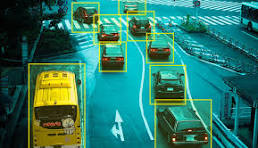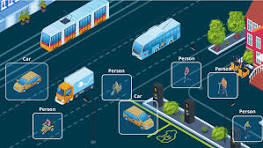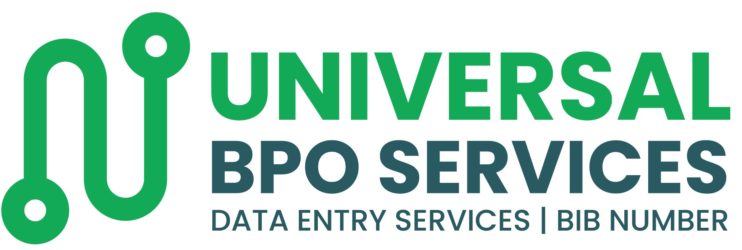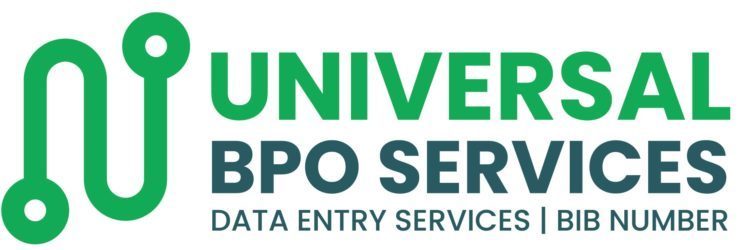
Image Annotation: The Essential Foundation of Computer Vision
If you want your AI projects to truly succeed, investing in professional image annotation services is crucial. Experts in this field ensure that your data is accurately labeled, making it much easier for your AI models to learn and perform well. High-quality annotations lead to better results, minimizing errors and boosting the reliability of your technology. By relying on professionals, you set a strong foundation for the success of your AI initiatives and stay ahead of competitors who might cut corners on data quality.
If you want powerful computer vision systems, high-quality image annotation is absolutely crucial. Without accurate labeling and tagging, computer vision algorithms simply can’t learn to interpret images correctly. In other words, image annotation forms the very backbone of successful computer vision projects—driving better results and smarter AI solutions across industries.
In today’s rapidly advancing world of artificial intelligence, the success of your project hinges on the quality of your data. That’s why investing in professional image annotation services is a smart move that can transform your results. But what exactly is image annotation? In simple terms, it involves tagging images with specific information (metadata), enabling machines to recognize and interpret visual content. This step is absolutely crucial for training effective computer vision models—making expert annotation not just helpful, but essential for AI success.
There are multiple types of image annotation—such as bounding boxes, semantic segmentation, polygon annotation, and landmarking—each designed to address specific needs. These techniques are essential because they enable AI systems to accurately identify objects, recognize patterns, and make intelligent decisions using visual information. Without expertly annotated images for training, even the most advanced algorithms will fail to deliver consistent and reliable results. This highlights just how crucial high-quality image annotation is for successful AI performance.
Relying on professional data labeling teams is a smart move for any computer vision project. Their specialized skills guarantee that each pixel or object in an image is labeled with absolute accuracy, tailored exactly to your project’s needs. This meticulous attention to detail not only speeds up the development process but also helps you avoid expensive mistakes later on, making your entire workflow more efficient and reliable.
Choosing professional image annotation isn’t merely a good idea—it’s the foundation for developing AI solutions that truly perform in real-world scenarios. Rather than risking your project’s success on inconsistent data, rely on specialists who know how to provide precise and accurate labeling. Your AI deserves expertise that ensures impactful results.

Image Annotation
- Image Annotation Services
- Image Labeling & Recognition
- Image Annotation Services for Machine Learning and AI
- Image Annotation Services for AI Model Training
- Image Annotation Service
- Image Annotation Services for AI & ML Companies
- Image and Data Annotation Services
- Image Annotation Company
- Image Annotation Companies
- Image Annotation Company in India
- Image Annotation Companies in India
- Image Annotation Service in India
- Image Annotation Services in India
- Data Annotation Services
- Data Annotation Company in India
- Data Annotation Companies in India
Image annotation services are absolutely crucial for training AI and machine learning models. They provide meticulously labeled, high-quality data—the kind only humans can deliver—which is the foundation for teaching computers how to understand visuals accurately. Whether it’s drawing boxes around objects, marking images at the pixel level, or assigning exact tags, these services give AI the information it needs to recognize and make sense of what it “sees.”
image annotation, image annotation services company, data annotation, image labeling, bounding box annotation, semantic segmentation annotation, polygon annotation, AI training data, computer vision annotation, image tagging service, photo labeling, object detection annotation, video annotation services, manual image annotation, medical image annotation, satellite image annotation, outsource image annotation, annotated dataset creation, machine learning data labeling, deep learning image annotation
Industries like autonomous vehicles, healthcare, and retail depend on this precise image annotation every day; without it, machines simply couldn’t interpret their environments with reliability. Techniques such as bounding boxes, semantic segmentation, polygon annotation, and keypoint detection aren’t just helpful—they’re indispensable. Quite simply: without strong image annotation practices in place, progress in AI vision would stall completely. If you want your AI systems to perform at their best and truly understand visual data like a human does, investing in quality image annotation isn’t just smart—it’s necessary.
How image annotation services work
Data labeling: By relying on skilled human annotators or advanced platforms to carefully label your images, you can be confident that every detail aligns with your project’s specific requirements. This focused method doesn’t just boost the accuracy of your data—it ensures that the results directly support and advance your unique goals.
AI training: When you use labeled images as training data, machine learning algorithms gain the ability to recognize patterns, objects, and features in new images with impressive accuracy. This step is absolutely crucial—it gives these algorithms the skills they need to analyze and interpret visual information effectively. As a result, they become much better at tasks like image recognition, making the entire process more reliable and efficient.
Quality assurance: Many services take quality seriously, providing thorough quality control and expert review to ensure your labeled data is consistently accurate. This dedication doesn’t just improve reliability—it means you can have complete confidence in the results you receive.
Automation: Adopting a “human-in-the-loop” strategy is a smart move for any business. By integrating the speed and efficiency of AI with the meticulous attention of human experts, companies can achieve streamlined workflows without sacrificing quality. This powerful combination guarantees greater accuracy and dependability, making it one of the most effective ways to deliver outstanding results and stay ahead in today’s competitive market.
Common annotation methods
Bounding Box: Outlining an object with a rectangular box isn’t just simple—it’s incredibly effective for localization. This method precisely marks the position and boundaries of an object in an image, ensuring systems can consistently identify and process the target item with accuracy. If you want reliable results, using rectangular boxes is definitely the way to go.
Semantic Segmentation: When we carefully label every single pixel in an image, we’re able to classify objects with a much higher level of precision—even when their edges are complex or hard to spot. This thorough method guarantees that every detail is accounted for, making our object classification not only more reliable but also far more detailed.
Instance Segmentation: Accurately identifying and labeling each instance of the same object—for example, every individual car in a traffic scene—is absolutely vital for achieving precise analysis and ensuring data accuracy. When we clearly distinguish between each vehicle, we unlock detailed insights that are essential for cutting-edge applications like autonomous driving, traffic monitoring, and advanced image processing. This method doesn’t just boost the reliability of our results; it also dramatically enhances overall system performance.
Polygon Annotation: If you need accuracy and detail, settling for a standard rectangle simply won’t do. Outlining irregular shapes with high precision is the best way to achieve flawless, reliable results—especially when traditional methods can’t deliver. For anyone who values exactness and wants to get it right the first time, this approach is the clear choice.
Keypoint Detection: Accurately identifying specific points on an object—such as facial landmarks for pose estimation—is crucial for achieving dependable analysis and results. By precisely pinpointing these locations, we ensure that the data collected is highly accurate, which in turn greatly enhances the reliability and effectiveness of pose estimation techniques. If you want trustworthy outcomes, focusing on these key points is absolutely essential.
Image Transcription: Implementing image-to-text technology like Optical Character Recognition (OCR) is a smart move for any organization wanting to boost efficiency. With OCR, you can quickly and accurately extract text from images, drastically reducing manual data entry and minimizing errors. This means your team saves time and energy, allowing them to focus on more valuable tasks. By streamlining processes in this way, OCR becomes an indispensable tool for driving productivity and getting the most out of your resources.
Image Captioning: Providing a natural language description for an image is absolutely crucial, as it ensures that visual content is accessible and meaningful to everyone—including individuals who can’t view the image themselves. When you use straightforward, everyday language to describe images, you’re not just sharing information; you’re opening up your content to a much broader audience. This approach boosts understanding and truly adds significant value to whatever you create.
Key applications
Autonomous Vehicles: Helping self-driving cars accurately identify pedestrians, other vehicles, and road signs isn’t just a technical achievement—it’s crucial for keeping our roads safe. When autonomous vehicles can consistently and precisely sense what’s around them, we dramatically lower the chance of accidents. This reliability is exactly what will make self-driving technology something people can truly trust and adopt with confidence.
Healthcare: Utilizing AI to analyze medical scans greatly boosts both the accuracy and speed of diagnoses. With advanced AI-powered tools, healthcare professionals benefit from swift, highly precise assessments, which leads to timelier and more reliable diagnoses for patients. This not only streamlines the diagnostic process but also ensures better patient outcomes by delivering accurate results when they matter most.
Retail: Automating essential tasks like inventory monitoring and improving e-commerce product discovery isn’t just a smart move—it’s a game changer. When businesses streamline these processes, they drastically cut down on manual errors and save valuable time. More importantly, customers can quickly find the products they want, leading to a smoother, more enjoyable shopping experience that directly translates into increased sales and higher efficiency. The benefits are clear: automation sets your business up for greater success in today’s fast-paced market.
Manufacturing: Improving quality control is absolutely crucial, and detecting defects in products and equipment is one of the smartest ways to make it happen. By identifying problems early on, companies can deliver higher-quality products, minimize expensive mistakes, and earn stronger trust from their customers. It’s a proactive step that pays off in both reputation and bottom line.
Financial Services: Spotting fraudulent patterns in documents and images has never been more critical, and thanks to advanced technology, our ability to do so is stronger than ever. By using cutting-edge fraud detection tools, you can be confident that any suspicious activity will be identified swiftly. This not only saves valuable time but also safeguards your business and helps you stay ahead of potential threats. Investing in these solutions is a smart move to protect what matters most.

